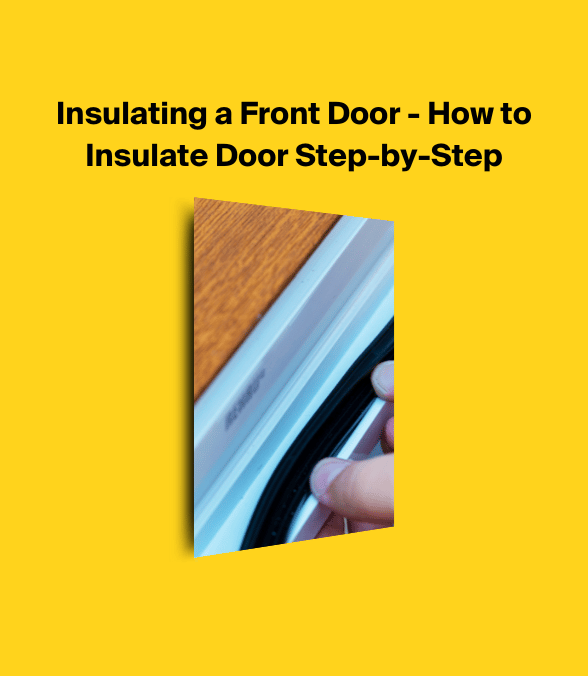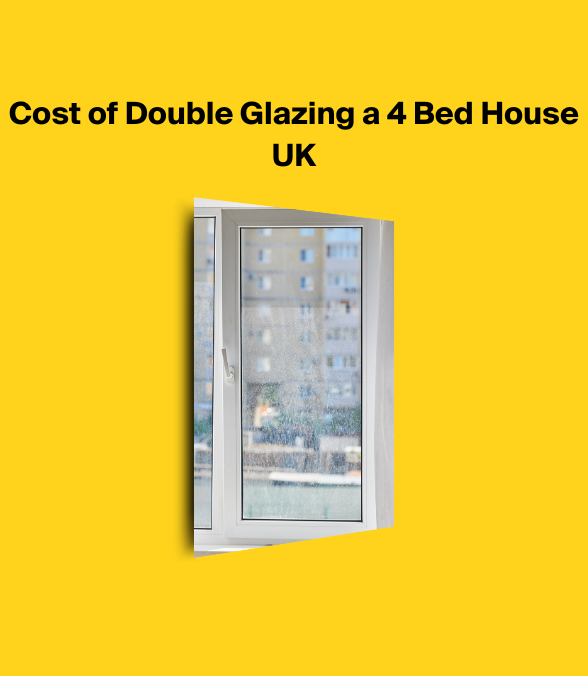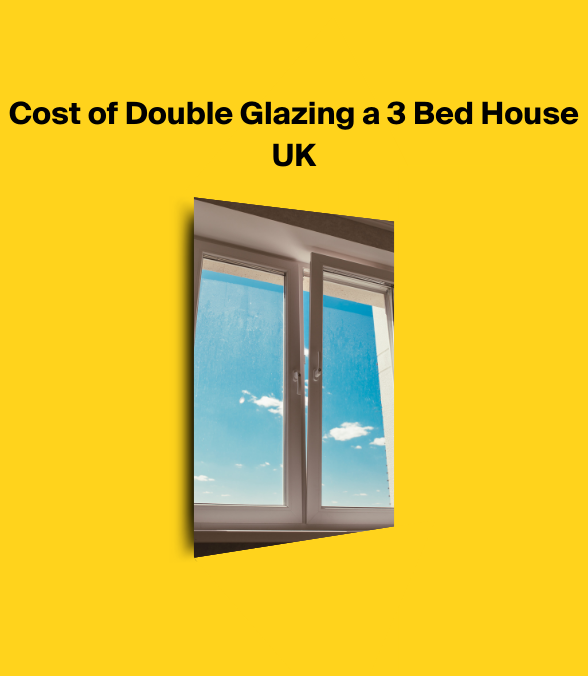Insulation for Front Doors
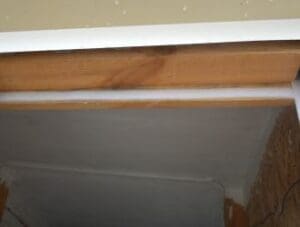
Is your front door letting in the chill and raising your energy bills?
Effective insulation can fix that. In this easy-to-follow guide, learn to insulate front doors, reduce energy costs, and enjoy a cosier home.
No fluff, just practical advice.
If you are looking for a new door, you can design and order online using our door builder below:

Build your door today!
Get a Quote
Door Insulation - Summary
- Insulating doors, particularly the front door, significantly enhance energy efficiency. This results in heating and cooling cost savings, a more comfortable indoor climate, and reduced greenhouse gas emissions.
- To properly insulate a front door, sealing gaps with weatherstripping, installing door sweeps or draught stoppers, and using insulating glass panels are effective methods that prevent draughts and minimise energy loss.
- Choosing the right door material affects insulation properties; fibreglass and insulated steel doors offer high energy efficiency, while wooden doors provide natural insulation but may require more maintenance.
Why You Should Insulate Your Doors
You probably wonder, "Why should I insulate my doors?" which is a fair question.
Well, door insulation is not merely a matter of comfort; it’s an investment in energy efficiency, cost savings, and environmental sustainability.
From your internal doors to your entry door, each door in your home plays a role in maintaining the indoor climate, and proper entry door insulation can significantly enhance their performance.
The primary advantage of front door insulation is its impact on heating and cooling cost savings.
Some front doors are designed with a high level of insulation, such as composite doors. This is one of the many pros and cons that composite doors come with.
By mitigating heat transfer between the indoor and outdoor environments, insulation for doors diminishes heat loss or gain and upholds consistent temperatures within the residence.
This energy efficiency reduces heating expenses, making your home not only more comfortable but also more cost-effective.
Furthermore, insulating your doors yields environmental benefits. Door insulation reduces greenhouse gas emissions by enhancing energy efficiency and reducing energy costs.
It’s a simple step that can make your home more eco-friendly, and one way to achieve this is to insulate doors.
Heating and Cooling Cost Savings
One of the most immediate benefits of door insulation is its impact on energy bills.
Insulated doors effectively block the cold, pests, and heat, stopping air leakage and minimising energy wastage through conduction.
This is particularly significant, considering an average home loses approximately 15% heat through non-insulated doors.
Homeowners who implement door insulation can save up to 15% on heating and cooling costs or up to 10% on total energy.
Door insulation mitigates draughts and heat loss by effectively sealing the gaps around internal doors and windows with draught-proofing, thereby reducing heat loss through convection.
This cost-effective approach can yield significant long-term savings.
Enhanced Home Comfort
Beyond cost savings, door insulation greatly contributes to home comfort.
Sealing gaps and cracks prevents air leakage and reduces the workload on heating and cooling systems, maintaining a consistent indoor temperature.
This minimisation of air leakage and sealing of cracks and openings reduces draughts and cold spots, making your home more comfortable to live in.
Additionally, insulation can help regulate overall humidity. Diminishing air movement into and out of the property contributes to elevated humidity levels and improves moisture regulation.
Furthermore, door insulation, including the adequate upkeep of door seals and weatherstripping, can influence indoor air quality.
This can hinder the infiltration of outdoor pollutants, allergens, dust, and other contaminants into the indoor environment.
Environmental Benefits
Insulating your doors is not just beneficial for you; it’s beneficial for the environment as well.
It significantly contributes to a more sustainable home by diminishing energy consumption by reducing heat loss, air leakage, and heat transfer through the doors.
Energy-efficient door insulation offers several benefits, including:
- Enhanced energy efficiency, resulting in decreased energy usage and reduced dependence on fossil fuels
- Substantial impact on reducing greenhouse gas emissions
- Increased comfort and cost-effectiveness of your home
- More eco-friendly living
Exterior Door Insulation Solutions
Given the established benefits of door insulation, let’s explore the numerous solutions available and go through how to insulate a door gap.
From weatherstripping to insulating glass panels, each solution is important in stopping draughts and enhancing the door’s energy efficiency.
Sealing the gaps around your front door is the initial step towards insulation.
Even the smallest gaps can allow cold air to infiltrate your home, increasing the load on your heating system and decreasing your home’s energy efficiency.
On the other hand, door sweeps and draught stoppers seal the bottom of your door, blocking draughts and enhancing front door insulation.
Finally, insulating glass panels in front doors and door side panels can improve energy efficiency.
It does this by reducing heat transfer through the glass, regulating internal temperatures, and reducing the reliance on heating and cooling systems.
We will provide a detailed analysis of these insulation methods, elaborating on their functionality and implementation.
Weatherstripping and Sealing Gaps
Weatherstripping and sealing gaps are effective ways to enhance your door’s insulation.
When appropriately applied, weatherstripping can significantly reduce air leakage, improve energy efficiency, and contribute to an overall improvement in comfort. Materials like:
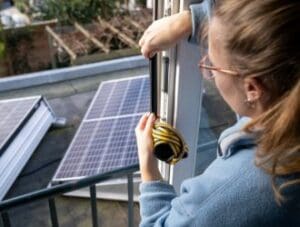
- vinyl
- metals
- V strip (tension seal)
- felt
- foam tape
- tubular rubber
- vinyl
- silicone
Weatherstripping is suitable for all existing doors, including exterior door insulation.
In addition to weatherstripping, sealing gaps around a door frame is equally important.
Using weatherstripping for smaller gaps and sealant for more significant gaps, you can prevent draughts and improve insulation.
The most suitable types of weatherstripping for various door types are:
- V Strip (Tension Seal)
- Felt
- Foam Tape
- Door Sweeps
- Tubular Rubber
- Vinyl
- Silicone
- Metal weatherstripping (bronze, copper, stainless steel, and aluminium)
Door Sweeps and Draught Stoppers
Door sweeps and draught stoppers prevent draughts and chilly air from infiltrating a room through the aperture at the base of a door.
Constructed from materials such as foam or rubber, they are affixed along the door’s bottom to establish a barrier and enhance insulation.
Door sweeps and draught stoppers function by effectively sealing the gap underneath the door, inhibiting the ingress of cold air and the egress of warm air.
The most suitable materials for door sweeps and draught stoppers are those crafted with fabric and 100 per cent cotton.
Finally, to install a draught stopper correctly, follow these steps:
- Apply the foam sealant strip along the window or door frame.
- Choose a sturdy material to sew into the cylinder casing.
- Install the draught stopper on the correct side of the door to block draughts effectively.
Insulating Glass Panels
Insulating your front door with glass panels can significantly improve your door’s energy efficiency.
Insulating glass panels utilise a low-emissivity (low-E) coating to minimise radiated heat transfer and ensure the tight sealing of insulating glass units to uphold effective thermal insulation.
You can also achieve this with window insulation film, which can be attached to your glass panels to help regulate the temperature in your home better.
Effective methods to insulate glass panels on doors include using weatherstripping materials such as V-strip, foam tape, and silicone sealant to close any openings between the door and frame.
This ensures a secure seal against air penetration.
Additionally, thick, heavy curtains or blinds can be an additional insulation layer over the glass panels, further protecting against draughts.
While the cost of installing insulating glass panels on front doors can vary significantly, the benefits in terms of improved energy efficiency make it a worthwhile investment.
Materials for Energy-Efficient Doors
While insulating your existing door can significantly improve its energy efficiency, sometimes the best solution is to upgrade your door to a new energy-efficient door.
Everyone wants to be as energy-efficient as possible to save money. Here are some materials you can use for high levels of efficiency:
Different materials have different insulation properties.
Fibreglass doors exhibit superior insulation properties compared to wooden and insulated steel doors, demonstrating an R-value between 5 and 6, making them highly energy-efficient.
Whether selecting a new door or upgrading an existing one, it's important to prioritise insights into the various door materials available.
In the following sections, we’ll discuss the insulation properties of wooden, fibreglass, aluminium and steel doors.
Wooden Doors
Wooden doors provide a natural and traditional aesthetic that many homeowners love.
Oak is an excellent choice for insulation due to its natural insulating properties. It effectively traps heat and maintains a comfortable temperature in your home throughout the year.
Wood exhibits a lower thermal conductivity than materials like steel frames, masonry, and glass, making it suitable for energy-efficient design.
Although wooden doors can provide good insulation if adequately maintained, they may require more upkeep than other materials.
Enhancing the insulation of wooden doors can be accomplished by sealing gaps using weatherstripping or draught excluders.
Applying insecticides, fungicides, and waterproofing can improve their durability and insulation.
Fibreglass Doors
Fibreglass doors are renowned for their durability, weather resistance, and energy efficiency.
Their high insulation efficiency is attributed to the combination of glass fibres and resin, which results in strength, durability, and lightweight properties.
The fully insulated core of fibreglass doors provides up to four times the R-value compared to wooden doors, contributing to their superior energy efficiency.
Moreover, fibreglass doors can withstand extreme weather conditions without warping or cracking and remain resistant to moisture, providing longevity and impact resistance.
These qualities make fibreglass doors an excellent choice for homeowners looking for a low-maintenance, energy-efficient door option.
Aluminium and Steel Doors
Aluminium and steel doors can offer good insulation if properly constructed and installed.
Aluminium doors are known for their ability to reduce heat losses, providing a high level of insulation.
On the other hand, thermally broken, insulated steel doors are recognised for their energy efficiency and offer a low U-factor.
To improve insulation, fibreglass rolls, foam boards, or reflective insulation foil can be utilised for steel doors, while spray insulation can be applied to exterior metal doors.
However, a notable drawback of steel and aluminium doors is their potential for poor insulation properties compared to other door materials.
This includes aluminium bifold doors, aluminium French doors and aluminium sliding patio doors, which are popular across the UK.
Composite Doors
Composite doors are one of the best insulation options and a great all-rounder, popular front doors in the UK.
These doors are made from various materials, including wood, uPVC, glass-reinforced plastic (GRP), and insulating foam.
Composite doors are known for their durability and security and are some of the best-performing front door options for energy efficiency.
With different layers of insulating material, energy efficient composite doors can save you tons of money during their lifespan, which can be over 30 years if well maintained.
Upgrade to a New Insulated Front Door
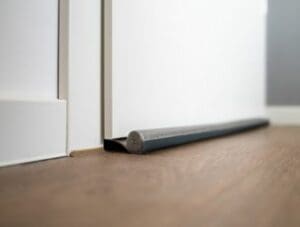
Not interested in adding insulation to your doors?
Another solution could be to replace them entirely with an already-insulated door.
A new insulated front door can greatly enhance your home's energy efficiency and insulation performance.
A new door can provide superior insulation, enhance your home’s curb appeal, and increase its value.
But how do you know when to replace your front door, and how do you choose the right insulated door?
The following sections will delve into these questions, giving you the knowledge to upgrade your entry doors.
Signs Your Front Door Needs Replacement
Recognising when your front door needs replacement can prevent unnecessary energy expenses and discomfort. The indicators below suggest potential replacement.
- reduced functionality
- presence of cracks, warps, and dents
- experience with draughts
- hearing squeaking
Additionally, visible damage, decay, or warping indicate that your door is no longer performing its job effectively.
Another essential factor to consider is the door’s weather sealing.
Poor weather sealing can result in gaps between the door and the door frame, leading to air draughts and water leaks, indicating the necessity for door replacement.
If you’re experiencing any of these issues, you may want to consider upgrading to a new insulated front door.
Selecting the Right Insulated Door
Choosing the right insulated door is a massive step in improving your home’s energy efficiency. Factors to consider when selecting a new insulated front door include:
- The weather conditions it needs to withstand
- Its energy efficiency
- The material it is made from
- Size
- Security features
- Aesthetic design
- Expected lifespan
Considering these factors will help you decide and choose the best-insulated door for your home.
A door with more excellent insulation will have a higher energy efficiency rating, signifying superior insulation ability.
Fibreglass doors are optimal for weather resistance and insulation against heat and cold.
Aluminium doors are also renowned for their exceptional thermal insulation. Finally, the door’s design can significantly impact its insulation and energy efficiency.
For instance, wooden doors are less energy efficient than steel doors due to wood’s porous nature and heat absorption.
Professional Front Door Insulation
If you are unsure about DIY insulation, you can always hire a professional to do the job for you.
Opting for professional insulation of your front door is a valuable investment. Here are some reasons why:
- Professionals have the knowledge and experience to select the appropriate insulation materials based on local climate conditions.
- Professionals can ensure a secure and snug fit of the insulation.
- Professional installation can save you time and effort.
We will subsequently delve into the advantages of professional installation.
Benefits of Expert Installation
Having your door professionally installed offers numerous benefits. Professionals concentrate on:
- Accurately installing weatherstripping on the sides, top, and bottom sections of the door
- Assessing the bottom seal
- Measuring gaps along the side and head jambs to select the appropriate weatherstripping
- Installing weatherstripping at the base and top of the door to eliminate gaps and stop warm air from escaping.
Professional door installation has the effect of correctly aligning and securely fitting doors, enhancing their longevity and ensuring optimal functionality.
Moreover, professional door installation enhances a home's energy efficiency by improving insulation, minimising air leakage, and preventing unwanted heat loss or gain through the door.
Insulating Doors in Your Home - Our Thoughts
Hopefully, with this post, you'll know that insulating your front door effectively reduces energy costs, enhances home comfort, and contributes to environmental sustainability.
Weatherstripping, sealing gaps, installing door sweeps and draught stoppers, and insulating glass panels can significantly improve your door's insulation.
Depending on your needs and preferences, wooden doors, fibreglass doors, aluminium doors, and steel doors all offer different advantages in terms of insulation.
If your door shows wear and tear, upgrading to a new insulated front door can be a worthwhile investment.
While DIY insulation for doors can be effective, professional installation ensures optimal performance and longevity.
Frequently Asked Questions
How to insulate front door?
You can make your front door more insulated by tightening fittings and screws, stripping and replacing existing weatherproofing.
Sealing glass doors with heavy curtains, installing a weather seal, and using draught snakes or blockers when the door isn't in use are also effective methods.
This will help keep your home better insulated and more energy efficient.
How do I stop cold air coming through my front door?
To stop cold air from coming through your front door, use weather strips, install new door sweeps, apply foam tape, insulate with window film, hang insulated curtains, recaulk windows and doors, or use a door snake.
These methods can help block cold air from entering your home.
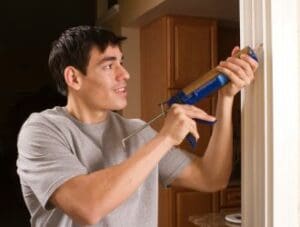
What are the benefits of insulating my front door?
Insulating your front door can reduce heating and cooling costs and enhance home comfort.
Additionally, it contributes to environmental sustainability by reducing energy consumption and greenhouse gas emissions.
It's a practical improvement for your home, and getting a new front door is quite affordable, just as the cost of uPVC windows if you upgrade your windows simultaneously.
What materials are best for insulating my front door?
Consider insulating your front door with wooden, fibreglass, aluminium, or steel doors depending on your specific needs and preferences.
Each option offers different advantages in terms of insulation. Please view our door and window gallery for some inspiration to give you some ideas.
How do I know if my front door needs replacement?
It may need replacement if your front door has reduced functionality, cracks, warping, dents, draughts, or squeaking.
Insulated Doors - What next?
We offer a range of door and window options; what's more, you can design and order online in minutes.
Click the link below now to try our door builders:

